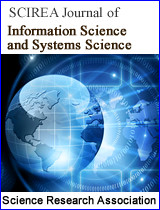A Simulation Model of Repairable Parallel Systems Reliability
DOI: 10.54647/isss120340 21 Downloads 47646 Views
Author(s)
Abstract
We consider repairable parallel system that consists of m identical units. At any moment of time, a unit can be in one of the two states: either operational or failed. Suppose, the number n of repair facilities is restricted (n?m), so failed units can form a queue for recovering. Assuming that the distributions of the time to failure (X) and the repair time (Y) for each unit are known, our task is to determine the reliability indices of the system. One of the methods for assessing system reliability is the simulation method. In this approach, the model replicates the operation of a real system, emulating the functioning process of the actual system over time. In many cases, simulation becomes the most effective and, often, the only practical method for determining the reliability of repairable systems. Using a GPSS World simulation model, we studied the dependencies of system’s reliability indicators on the following parameters: the coefficient of variation of time to failure and repair time of units, and the ratio ?=E(Y)/E(X). By utilizing the expressions for average transition times between states of the Markov birth-death process, we derive formulas for the mean values of the system’s time to failure and time between failures in the case of exponential distributions of random variables X and Y. We validated the simulation models by comparing the results with those obtained by an analytical method. We determined the simulation time required to obtain results corresponding to the stationary process.
Keywords
reliability, parallel systems, repairable systems, simulation model, GPSS World
Cite this paper
Yuriy Zhernovyi,
A Simulation Model of Repairable Parallel Systems Reliability
, SCIREA Journal of Information Science and Systems Science.
Volume 8, Issue 2, April 2024 | PP. 58-73.
10.54647/isss120340
References
| [ 1 ] | Mohit Kumar Kakkara, Ashok K. Chitkarab and Jasdev Bhatti, “Reliability analysis of two dissimilar parallel unit repairable system with failure during preventive maintenance,” Management Science Letters, 6 (4). 285–296. 2016. |
| [ 2 ] | Dhillon, B.S. and Singh, C., Engineering Reliability – New Techniques and Applications, John Wiley & Sons Ltd, 1981, 339 p. |
| [ 3 ] | Polovko, A.M., Fundamentals of Reliability Theory, Academic Press, 1968, 459 p. |
| [ 4 ] | Birta, L.G. and Arbez, G., Modelling and Simulation: Exploring Dynamic System Behaviour, 3rd edition, Springer Nature, Switzerland, 2019, 491–520. |
| [ 5 ] | Zhernovyi, Yu., Creating models of queueing systems using GPSS World: Programs, detailed explanations and analysis of results, LAP Lambert Academic Publishing, Saarbrücken, 2015, 220 p. |
| [ 6 ] | Zhernovyi, Yu.V., Markov Models of Queueing: Texts of Lectures, Ivan Franko National University Publishing House, Lviv, 2004, 154 p. (In Ukrainian). |
| [ 7 ] | Zhernovyi, Yu. and Kopytko, B., “Formulas for average transition times between states of the Markov birth-death process,” Journ. of Applied Mathematics and Computational Mechanics, 20(4). 99–110. 2021. |

